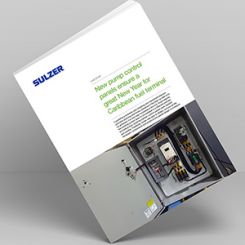In oil and gas facilities and plants, many pumps are operated in parallel. There are risks, potential issues and problems for parallel pump operation. Many pumps have been damaged because of poor combination, wrong selection or carelessness. However, general knowledge on pump parallel operation is low, and there has been limited publication on this important topic. Unfortunately, many engineers seem to think pumps are like home appliances: someone can easily plug them in and put in parallel operation. This is not the case since pumps in parallel operation take suction from a common source and discharge into a common header. Another reason is that the pumps that interact with each other would be neglected. This is a major shortfall in pump engineering. Different pumps present different behaviors when in parallel operation. As an example, “sensitive pumps,” which are more affected by operation far from best efficiency point (BEP), can be more affected. The effects of parallel operation on efficiency, reliability and performance should be carefully considered.
 Image 1. Example of two parallel pumps (Images courtesy of the author)
Image 1. Example of two parallel pumps (Images courtesy of the author)General Notes on Parallel Operation
There are many reasons to put pumps in parallel operation. Sometimes, pumps are put in parallel to cover a wide range of flow requirements (flow control). In other situations, they are installed for standby requirements or emergency backup. In other cases, for instance with an expansion or renovation program, a few new pumps are added to an existing set to increase the system capacity. In such a case, dissimilar pumps could be operated in parallel, which is a complicated matter. In theory, when pumps run in parallel, they operate against the same discharge head, and the combination pump “head- capacity” performance curve is, theoretically, determined by adding the respective flow rates of each pump, at a series of specific head values. However, this is just theory. There are many practical concerns, risks, factors and parameters that should be considered. If the pumps are not properly selected for parallel operation and all required provisions for such complicated operation are not foreseen, there might be issues. Inefficient operation, pump reliability issues, pump damage and operational problems are possible. For instance, when incorrectly selected pumps are operated in parallel, one of the pumps can be driven to operate outside of allowable operating range (far from BEP), even near shut-off point. This can result in over-heating and damage to the pump. Parallel operation of identical pumps is a better-known topic than for dissimilar pumps. There are some well-established rules for identical pumps. For identical pumps, performance curves should be matched within specified tolerances, usually with tolerances less than 2 percent. In other words, although pumps are theoretically identical—because of different manufacturing and tolerances— in reality their curves are slightly different and should be limited to 2 percent. This is required to avoid problems. Image 2. Parallel pumps during the installation phase
Image 2. Parallel pumps during the installation phase
